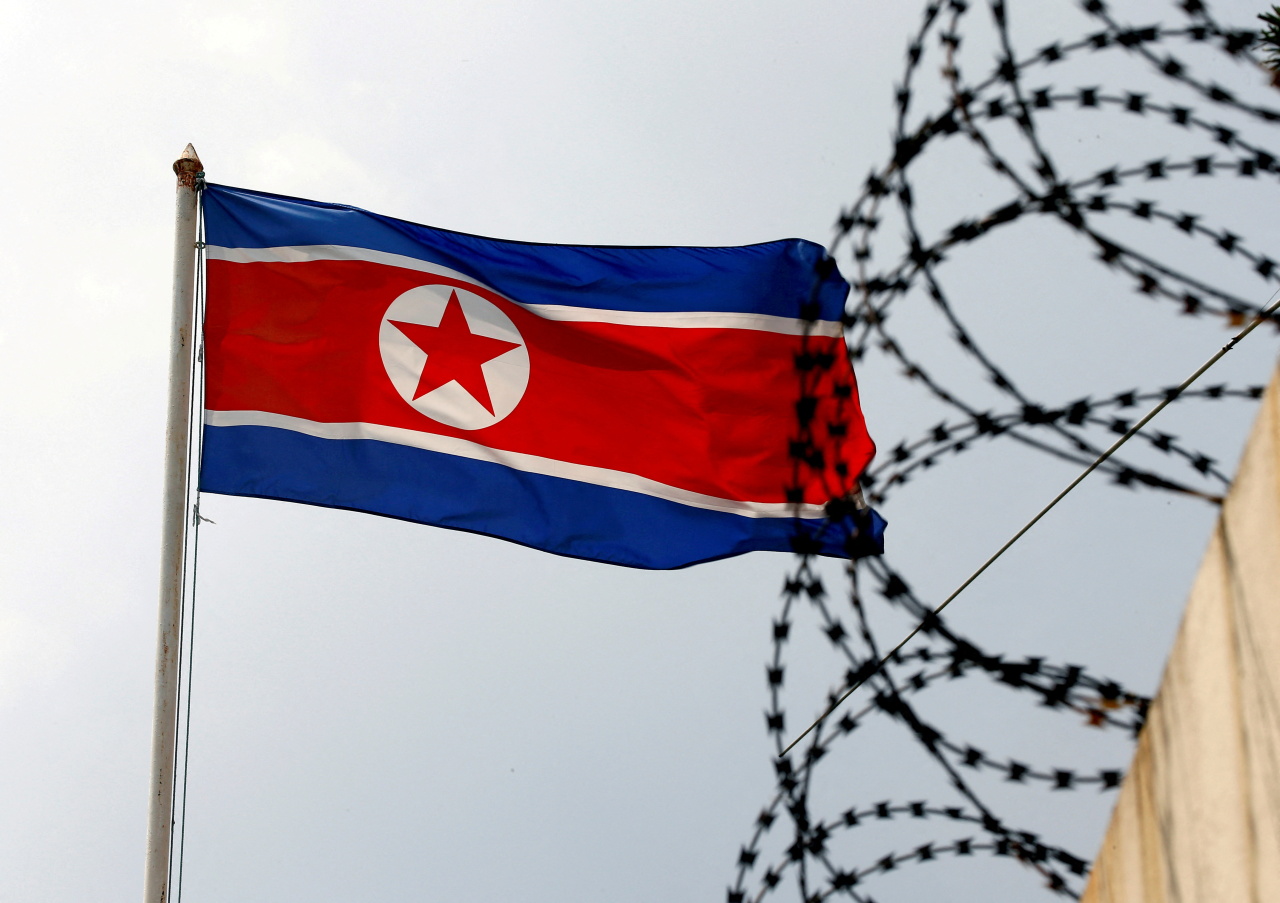First signs of activity detected at N.Korean nuclear test site in 4 years
Reactor at Yongbyon appears to be in operation, IAEA chief says
By Ji Da-gyumPublished : March 8, 2022 - 14:36

Satellite imagery shows “very early signs of activity” at the previously shuttered Punggye-ri nuclear test site for the first time since 2018, while a UN watchdog said North Korea appears to have continued fissile material production at its major nuclear facilities.
The California-based James Martin Center for Nonproliferation Studies on Monday said the commercial satellite images taken on March 4 suggest that Pyongyang has resumed construction activities at the nuclear test site in Punggye-ri in Kilju County of North Hamgyong Province.
“This is the first activity we have seen at the site since North Korea dismantled it in May 2018,” Jeffrey Lewis and Dave Schmerler, analysts at the center, said in a report.
North Korea previously conducted six nuclear tests between October 2006 and September 2017 at the country’s sole nuclear test facility in Punggye-ri.
But North Korea dismantled the nuclear testing site in May 2018 ahead of the first US-North Korea summit in Singapore to implement North Korean leader Kim Jong-un’s commitment at a party plenum.
“We see very early signs of activity at the new site, including construction of a new building, repairs of another building, and what is possibly some lumber and sawdust,” the report read.
“North Korea uses a substantial amount of wood at the site both for buildings and shoring up tunnels. These changes have occurred only in the past few days.”
The recent activity, albeit an embryonic sign, is significant, given that North Korea has alluded to its potential intent to renounce its self-imposed moratorium on testing nuclear weapons and intercontinental ballistic missiles.
The North Korean leader issued instructions to “examine the issue of resuming the entire activities that have been temporarily suspended” at a Politburo meeting of the ruling Workers’ Party of Korea in January.
The CNS said the “very preliminary” activities could be a sign of North Korea’s preparation for conducting a nuclear test in the several months, although it is still “difficult to conclude what precisely is being built or why.”
“The construction and repair work indicate that North Korea has made some decision about the status of the test site,” the report said.
“The test site is many months, if not years, from being ready for North Korea to conduct nuclear explosions there.”
But other factors including the extent of the damage to the nuclear test tunnels would determine when to resume a nuclear test.
The CNS also said a nuclear test could aim to “improve its confidence in its large thermonuclear weapon with a yield greater than 100 kilotons” or “validate new tactical weapons” that can be mounted on shorter-range ballistic and cruise missiles.
Continuous nuclear activities
Rafael Mariano Grossi, director general of the International Atomic Energy Agency, on Monday reported Pyongyang’s continuous nuclear activities at high-profile facilities during the board of governors meeting at the IAEA headquarters in Vienna.
North Korea seems to have operated the 5-megawatt-electrical reactor at its main Yongbyon nuclear complex, which can produce plutonium used for nuclear weapons, since early July 2021.
Pyongyang previously had shut down the facility temporarily from early December 2018 to the beginning of July 2021, according to the IAEA annual report issued last August.
“There are ongoing indications consistent with the operation of the 5MW(e) reactor at the Yongbyon site,” Grossi said.
But the IAEA chief said there “have been no indications of operation of the Radiochemical Laboratory” since July 2021, where Pyongyang can reprocess spent nuclear fuel rods to extract plutonium weapons-grade plutonium.
The UN nuclear watchdog has also continued to observe construction activities at the Yongbyon nuclear complex, including the construction of an annex to the reported centrifuge enrichment facility and a new building adjacent to the light water reactor.
Additionally, signs of activity have been detected at the Kangson complex, which is believed to be a centrifuge enrichment facility, as well as the Pyongsan Uranium Concentration Plant and its associated Pyongsan Mine.
The Pyongsan Mine and Concentration Plant are believed to be the sole publicly acknowledged places where North Korea extracts uranium ore and turns it into yellowcake that can be used to produce enriched uranium.
The US think tank 38 North last week also released commercial satellite images that showed “ongoing production” of plutonium and enriched uranium and construction works for the expansion of its plutonium production capacity at the Yongbyon Nuclear Complex.
The reports come amid Pyongyang has intensively implemented North Korea’s five-year defense plan proposed by the North Korean leader at the eighth party congress held in January last year.
At the congress, Kim specifically called for advancing nuclear technology, developing tactical nuclear weapons and pushing ahead with the “production of supersized nuclear warheads.”
By Ji Da-gyum (dagyumji@heraldcorp.com)
The California-based James Martin Center for Nonproliferation Studies on Monday said the commercial satellite images taken on March 4 suggest that Pyongyang has resumed construction activities at the nuclear test site in Punggye-ri in Kilju County of North Hamgyong Province.
“This is the first activity we have seen at the site since North Korea dismantled it in May 2018,” Jeffrey Lewis and Dave Schmerler, analysts at the center, said in a report.
North Korea previously conducted six nuclear tests between October 2006 and September 2017 at the country’s sole nuclear test facility in Punggye-ri.
But North Korea dismantled the nuclear testing site in May 2018 ahead of the first US-North Korea summit in Singapore to implement North Korean leader Kim Jong-un’s commitment at a party plenum.
“We see very early signs of activity at the new site, including construction of a new building, repairs of another building, and what is possibly some lumber and sawdust,” the report read.
“North Korea uses a substantial amount of wood at the site both for buildings and shoring up tunnels. These changes have occurred only in the past few days.”
The recent activity, albeit an embryonic sign, is significant, given that North Korea has alluded to its potential intent to renounce its self-imposed moratorium on testing nuclear weapons and intercontinental ballistic missiles.
The North Korean leader issued instructions to “examine the issue of resuming the entire activities that have been temporarily suspended” at a Politburo meeting of the ruling Workers’ Party of Korea in January.
The CNS said the “very preliminary” activities could be a sign of North Korea’s preparation for conducting a nuclear test in the several months, although it is still “difficult to conclude what precisely is being built or why.”
“The construction and repair work indicate that North Korea has made some decision about the status of the test site,” the report said.
“The test site is many months, if not years, from being ready for North Korea to conduct nuclear explosions there.”
But other factors including the extent of the damage to the nuclear test tunnels would determine when to resume a nuclear test.
The CNS also said a nuclear test could aim to “improve its confidence in its large thermonuclear weapon with a yield greater than 100 kilotons” or “validate new tactical weapons” that can be mounted on shorter-range ballistic and cruise missiles.
Continuous nuclear activities
Rafael Mariano Grossi, director general of the International Atomic Energy Agency, on Monday reported Pyongyang’s continuous nuclear activities at high-profile facilities during the board of governors meeting at the IAEA headquarters in Vienna.
North Korea seems to have operated the 5-megawatt-electrical reactor at its main Yongbyon nuclear complex, which can produce plutonium used for nuclear weapons, since early July 2021.
Pyongyang previously had shut down the facility temporarily from early December 2018 to the beginning of July 2021, according to the IAEA annual report issued last August.
“There are ongoing indications consistent with the operation of the 5MW(e) reactor at the Yongbyon site,” Grossi said.
But the IAEA chief said there “have been no indications of operation of the Radiochemical Laboratory” since July 2021, where Pyongyang can reprocess spent nuclear fuel rods to extract plutonium weapons-grade plutonium.
The UN nuclear watchdog has also continued to observe construction activities at the Yongbyon nuclear complex, including the construction of an annex to the reported centrifuge enrichment facility and a new building adjacent to the light water reactor.
Additionally, signs of activity have been detected at the Kangson complex, which is believed to be a centrifuge enrichment facility, as well as the Pyongsan Uranium Concentration Plant and its associated Pyongsan Mine.
The Pyongsan Mine and Concentration Plant are believed to be the sole publicly acknowledged places where North Korea extracts uranium ore and turns it into yellowcake that can be used to produce enriched uranium.
The US think tank 38 North last week also released commercial satellite images that showed “ongoing production” of plutonium and enriched uranium and construction works for the expansion of its plutonium production capacity at the Yongbyon Nuclear Complex.
The reports come amid Pyongyang has intensively implemented North Korea’s five-year defense plan proposed by the North Korean leader at the eighth party congress held in January last year.
At the congress, Kim specifically called for advancing nuclear technology, developing tactical nuclear weapons and pushing ahead with the “production of supersized nuclear warheads.”
By Ji Da-gyum (dagyumji@heraldcorp.com)








![[Hello India] Hyundai Motor vows to boost 'clean mobility' in India](http://res.heraldm.com/phpwas/restmb_idxmake.php?idx=644&simg=/content/image/2024/04/25/20240425050672_0.jpg&u=)











